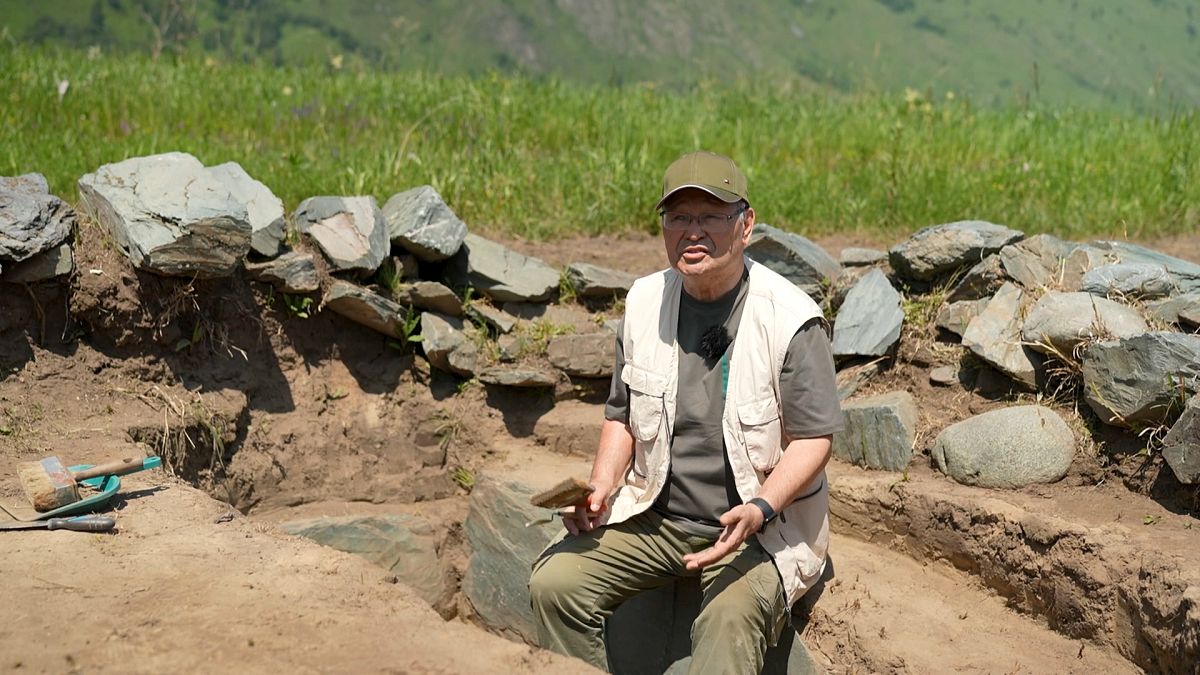

In the vast and rugged landscapes of Kazakhstan, where the whispers of ancient civilizations linger among the rolling steppes, one man’s tireless pursuit of knowledge has illuminated a rich tapestry of history previously hidden beneath the earth. Zainolla Samashev, a revered figure in Kazakh archaeology, has dedicated his life to uncovering the secrets of his homeland’s distant past. His discoveries have not only reshaped our understanding of Kazakhstan’s historical narrative but also challenged longstanding assumptions about the nomadic societies that once thrived in Central Asia.
Central Asia, historically viewed as a crossroads of cultures, has long captured the imagination of scholars and adventurers alike. The vastness of its terrain suggests a storied past, inhabited by diverse peoples whose legacies are often shrouded in myths and limited documentation. In this context, Samashev’s contributions stand as a beacon of clarity, shedding light on the cultural and historical complexities of the region.
Growing up in Kazakhstan, a land of sweeping steppes and ancient traditions, Samashev was drawn to the mysteries that lay beneath his feet from a young age. This curiosity propelled him into the field of archaeology, where he found his calling in the study and preservation of his nation’s past. Immersed in painstaking research and fieldwork, he has unearthed significant artifacts that reveal the intricate lifestyles of ancient nomadic tribes.
Among Samashev’s most celebrated discoveries are the hauntingly beautiful petroglyphs carved onto the rocks of the Tamgaly Gorge, a UNESCO World Heritage site. These rock engravings, depicting scenes of dance, hunt, and ritual, serve as vital clues to the spiritual and societal aspects of early Steppe cultures. Through these engravings, Samashev interprets a world where spirituality and daily life were deeply interconnected, painting a picture of a community rich in traditions and beliefs.
Furthermore, the discovery of burial mounds known as “kurgans” has provided valuable insight into the funerary practices and social hierarchies of ancient nomadic tribes. The remains uncovered within these kurgans offer a glimpse into the complexities of these societies, suggesting that they were far more structured and hierarchical than previously believed. Samashev’s work challenges the simplistic view of nomads as wandering herders, arguing instead for their role as sophisticated networks of cultural exchange and innovation.
Samashev’s endeavors are rooted not only in a passion for archaeology but also in a deep love for his cultural heritage. By bringing ancient narratives to life, he fosters a greater appreciation for the historical significance of the region among his compatriots. His efforts underscore the importance of preserving the past, not only for academic understanding but also for enriching the national identity of Kazakhstan, instilling pride in its ancient origins.
Beyond the borders of his homeland, Samashev’s discoveries resonate with the global academic community, inviting scholars to re-evaluate cultural interactions across Central Asia. His findings contribute to a more nuanced understanding of the Silk Road, a historical network of trade routes that facilitated the exchange of goods, ideas, and technologies between East and West. The artifacts and cultural remnants uncovered by Samashev reinforce the idea of the Silk Road as a dynamic milieu of interaction, bringing to light the profound impact these exchanges had on the development of civilization.
Through a calm and reverent approach to archaeology, Samashev reminds us of the importance of preserving and interpreting the past with care and respect. His work serves as a gentle invitation to explore the depths of human history, encouraging each of us to appreciate the intricate paths our ancestors carved into the world. As we continue to uncover the stories engrained within the earth of Kazakhstan, we gain not only knowledge but also a deeper connection to the shared journey of humanity.
In conclusion, Zainolla Samashev’s contributions to archaeology resonate far beyond the fields of ancient Kazakhstan. His discoveries, marked by meticulous attention and profound cultural respect, encourage a global appreciation of the rich heritage that shapes our world today. The stories he unveils continue to inspire curiosity and admiration, offering a serene reminder of the enduring wonder of human history and the importance of preserving it for future generations.
Source: {link}
